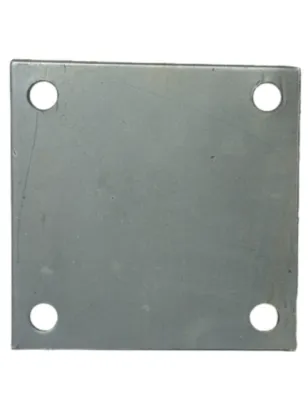loading...
- No. 9, Xingyuan South Street, Dongwaihuan Road, Zaoqiang County, Hengshui, Hebei, China
- admin@zjcomposites.com
- +86 15097380338
- Welcome to visit our website!
fiber reinforced plastic rod
Fiber Reinforced Plastic Rods A Versatile Material for Modern Applications
Fiber reinforced plastic (FRP) rods are emerging as one of the most innovative materials across various industries. Combining the lightweight nature of plastics with the strength and durability of fibers, these rods offer remarkable advantages that cater to the demands of modern engineering and construction projects. This article delves into the composition, properties, applications, and future prospects of fiber reinforced plastic rods.
Composition and Manufacturing
Fiber reinforced plastics consist primarily of a polymer matrix reinforced with fibers, typically made from materials such as glass, carbon, or aramid. Glass fiber reinforced plastic (GFRP) is the most common type, owing to its balance of cost and performance characteristics. On the other hand, carbon fiber reinforced plastic (CFRP) is favored in applications requiring superior strength-to-weight ratios.
The manufacturing process of FRP rods typically involves the resin transfer molding (RTM) or filament winding techniques. In RTM, a preform made of the fiber material is placed in a mold, and resin is injected under pressure. Conversely, filament winding involves winding continuous fiber strands around a core in a controlled manner to achieve the desired thickness and density.
Key Properties
The combination of plastic and fiber yields several distinctive properties
1. Lightweight FRP rods are significantly lighter than traditional materials such as steel, making them easier to handle and install. 2. High Strength-to-Weight Ratio Despite their lightweight nature, FRP rods exhibit high tensile strength, comparable to that of metals, enabling their use in load-bearing applications.
3. Corrosion Resistance Unlike metals, FRP rods do not corrode in harsh environments, making them ideal for applications in marine and chemical industries.
4. Electrical Insulation FRP rods are excellent electrical insulators, making them suitable for electrical applications where conduction must be avoided.
5. Versatility in Design The manufacturing processes allow for customization in terms of size, shape, and fiber orientation, enabling the design of rods to meet specific application requirements.
Applications
fiber reinforced plastic rod

The unique properties of FRP rods open the door to a multitude of applications across various sectors
1. Construction and Civil Engineering FRP rods are used in reinforced concrete structures, providing structural integrity without the risk of corrosion associated with steel reinforcements. They are also utilized for the repair and strengthening of existing structures.
2. Aerospace and Automotive Industries In these industries, the lightweight nature of FRP allows for improved fuel efficiency and performance. FRP rods are often used in components such as chassis and interior fittings.
3. Marine Applications Their corrosion resistance makes FRP rods ideal for use in boat building and offshore structures, where exposure to saltwater can be detrimental to traditional materials.
4. Sports Equipment The unique strength and lightweight properties of FRP have led to its incorporation in sports equipment, from fishing rods to skis, improving performance and user experience.
5. Telecommunications FRP rods are employed in the construction of utility poles and communication masts due to their durability and resistance to environmental factors.
Future Prospects
The demand for fiber reinforced plastic rods is expected to grow exponentially in the coming years, driven by the increasing need for lightweight, durable, and cost-effective materials. As industries prioritize sustainability, the development of bio-based resins for FRP manufacturing could lead to environmentally friendly options, further enhancing the appeal of these materials.
Research into enhancing the properties of FRP rods, such as improving fiber-matrix adhesion or exploring new fiber types, is ongoing. Innovations in manufacturing technologies will also contribute to the cost-effectiveness and scalability of FRP rod production.
Conclusion
Fiber reinforced plastic rods represent a significant advancement in material science, providing diverse industries with a solution that merges strength with lightweight convenience. As applications continue to expand and technology progresses, FRP rods stand poised to play an integral role in the evolution of modern engineering practices. Embracing this innovative material could lead to more durable, efficient, and sustainable solutions across a myriad of fields.
-
The Rise of FRP Profiles: Strong, Lightweight, and Built to LastNewsJul.14,2025
-
SMC Panel Tanks: A Modern Water Storage Solution for All EnvironmentsNewsJul.14,2025
-
GRP Grating: A Modern Solution for Safe and Durable Access SystemsNewsJul.14,2025
-
Galvanized Steel Water Tanks: Durable, Reliable, and Ready for UseNewsJul.14,2025
-
FRP Mini Mesh Grating: The Safer, Smarter Flooring SolutionNewsJul.14,2025
-
Exploring FRP Vessels: Durable Solutions for Modern Fluid HandlingNewsJul.14,2025
-
GRP Structures: The Future of Lightweight, High-Performance EngineeringNewsJun.20,2025
